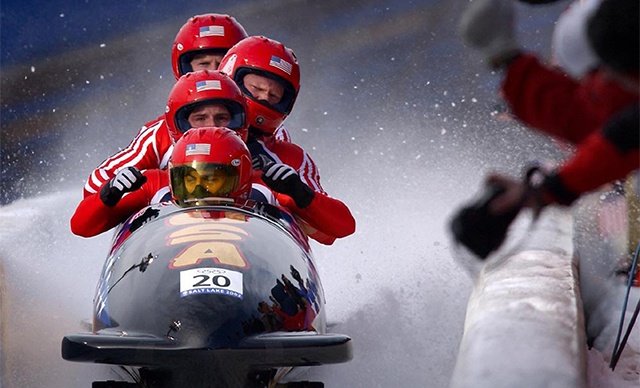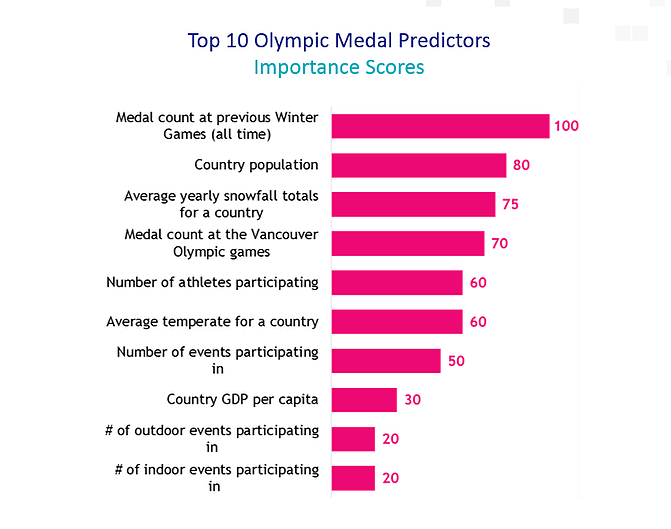It’s about a 4 min. read.

From dangerous winds and curling scandals to wardrobe malfunctions, there’s been no shortage of attention-grabbing headlines at the 2018 Winter Olympics.
And for ardent supporters of Team USA, the big story is America’s lagging medal count. We’re over halfway through the games, and currently the US sits in fifth place behind Norway, Germany, Canada, and the Netherlands.
Based on last week’s performance (and Mikaela Shiffrin’s recent withdrawal from the women’s downhill event), it’s hard to know for sure how America will place. However, we can use predictive analytics to determine the main predictors of medal count to anticipate which countries will generally be on the podium.
We’ll use TreeNet modeling to identify the main drivers of medal count based on previous Winter Olympics outcomes. For the sake of simplicity, we’ll focus on the 2014 Sochi winter games (excluding all Russia data which would skew the model!) From there, we can infer similarities between medal drivers for Sochi and PyeongChang.
Please note all these results are hypothetical, and not reflective of actual data!
To successfully run a TreeNet analysis, you need both a dependent variable (e.g., the outcome you are trying to predict) and independent variables (e.g., the input that could be possible predictors of the dependent variable).
In this case…
Dependent variable: Total 2014 Sochi Winter Games medal count
Independent variables (including data both directly related to the Olympics and otherwise):
The Results!
Our model shows the relative importance of each variable calibrated to a 100-point scale. The most important variable is assigned a score of 100 while all other variables are scaled relative to that:

Meaning, in this sample output, previous medal history is the top predictor of Olympic medal outcome with a score of 100 while # in outdoor events and indoor events participating in are the least predictive.
This is a fun and simple example of how we could use TreeNet to forecast the Winter Olympic medal count. But, we also leverage this same technique to help clients predict the outcomes of some of their most complex and challenging questions. We can help predict things like consideration, satisfaction or purchase intent for example, and use the model to point to which levers can be pulled to help improve the outcome.